The respiratory system is made up of organs that enable us to use oxygen from the air we breathe in and remove carbon dioxide, which is poisonous to us. The oxygen is used in a chemical reaction that takes place in all cells called respiration.
For respiration, the respiratory system and the digestive system work together as the oxygen (from the lungs) reacts with the glucose provided by food we eat. The products of respiration are water and carbon dioxide and we remove them from our body when we exhale.
Take care not to confuse breathing in and out with respiration: breathing is only part of respiration (the part where we exchange gases).
The diagram shows the respiratory system in humans.
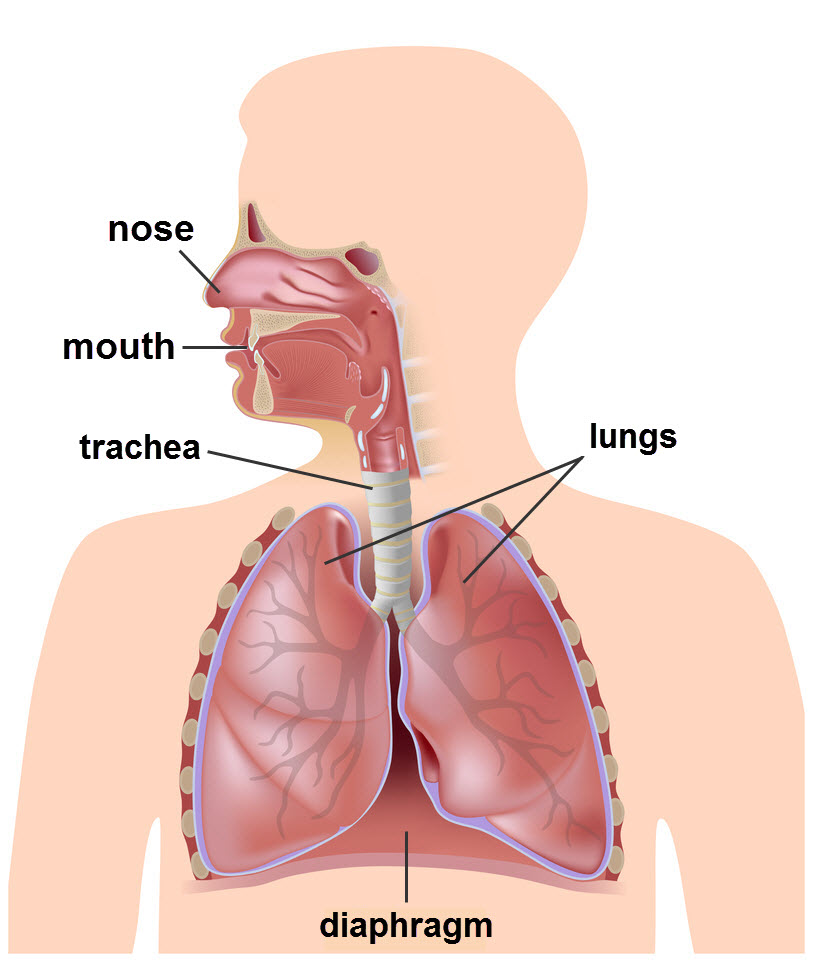
The nose (and nasal cavity) form the first port of entrance of air into our body. The mouth can be used as a secondary entrance when needed.
The nose and mouth are connected to the trachea (windpipe). The trachea allows air to pass through to the lungs. It is covered by the epithelium, a layer of similar cells (so a type of tissue) that produce mucus, which traps germs, dirt and dust to prevent it going to the lungs.
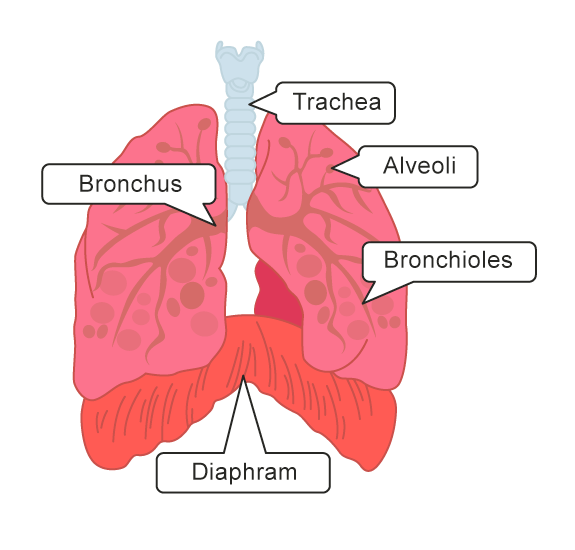
Towards its end, the trachea splits into two branches, the left and the right bronchus (plural bronchi). Each bronchus leads to a lung. The bronchi keep separating into branches, which in turn separate into smaller branches: these are the bronchioles that spread throughout the lungs. Each bronchiole ends in a tiny air sac called an alveolus (plural alveoli). The lungs are spongy structures made of many capillaries and millions of tiny air sacs - the alveoli.
Gas exchange
Getting oxygen from the air into the blood and removing carbon dioxide is referred to as gas exchange (basically, swapping carbon dioxide for oxygen). The alveoli have several adaptations that allow gas exchange to take place with the maximum effect:
1. They provide a large surface area where gas exchange can take place.
2. Their walls are moist and very thin (one cell thick).
3. They have a lot of tiny blood capillaries passing through them.
The diagram shows the structure of the alveoli.
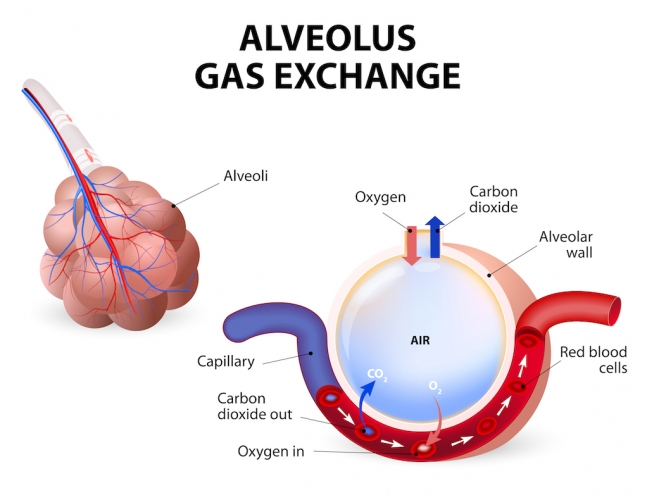
Blood cells pass through the tiny capillaries around the alveoli. The concentration of oxygen in the blood at that point is much lower than in the alveoli, as we have just inhaled.
The mechanism of diffusion allows substances to move from an area of a higher concentration to an area of a lower concentration, therefore oxygen passes through the walls of the alveoli into the bloodstream, which takes it to every single cell in the body. At the same time, carbon dioxide brought to the lungs from the rest of the body diffuses into the alveoli so it can be exhaled.
Effects of exercise, asthma and smoking
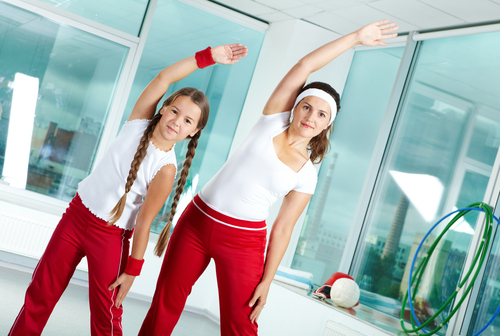
When we exercise, our cells need more energy, so more oxygen is taken in to allow a higher rate of respiration. Hard exercise can cause a lack of oxygen in the cells. Then the body can go into anaerobic respiration, which allows a limited amount of energy to be released from our food.
Things like pollen, hair and dust can cause an asthma attack, which means the bronchioles get inflamed and swell. The airways narrow, which makes it difficult for air to pass through as we breathe. People who suffer from asthma have to use an inhaler, which relaxes the airways and makes breathing easier.
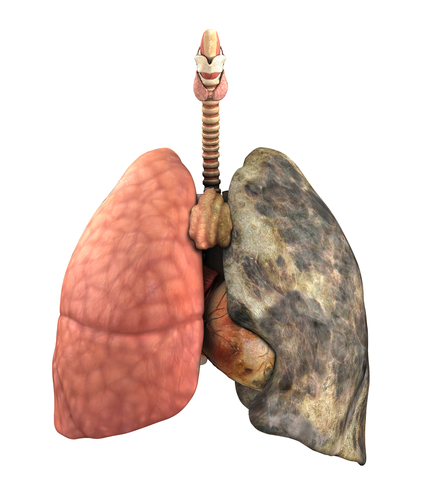
Smoking causes more mucus to be produced by the lining of the trachea and other surfaces in the lungs and this leads to a smoker's cough. One result of this can be chronic bronchitis. Mucus production further increases and the lining of the bronchioles thickens. Eventually, this can lead to emphysema and lung cancer
So there's lots to remember here!
Let's have a go at some questions about respiration now.








